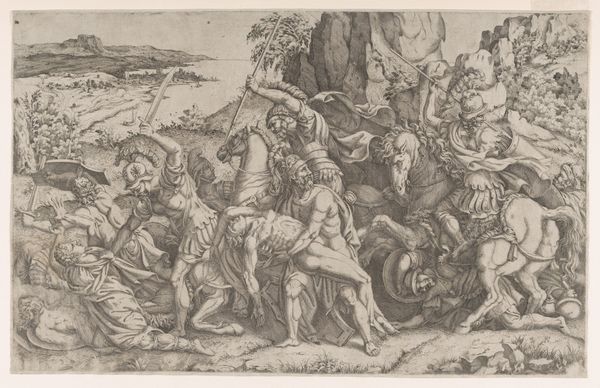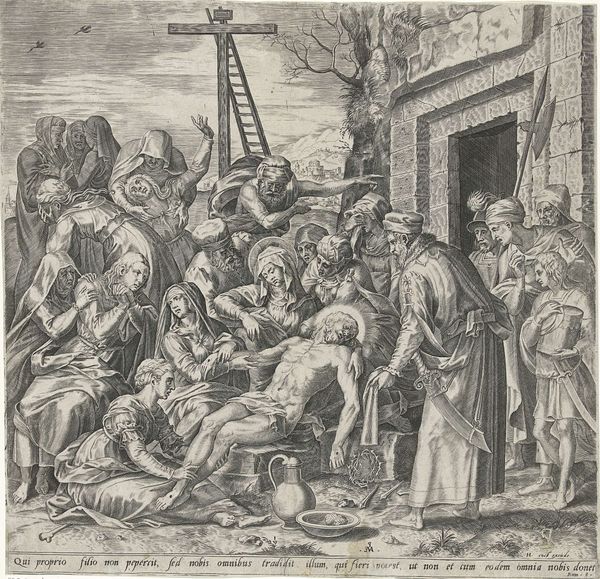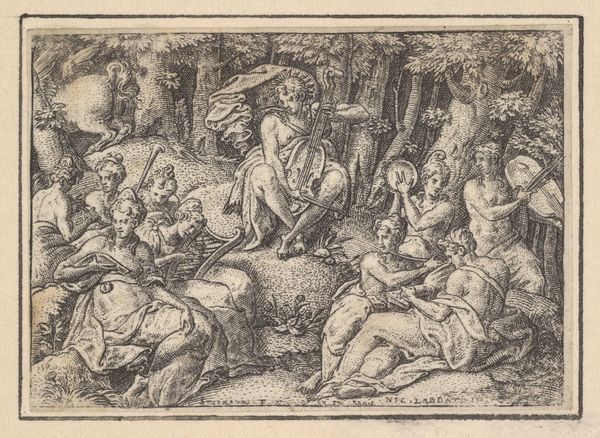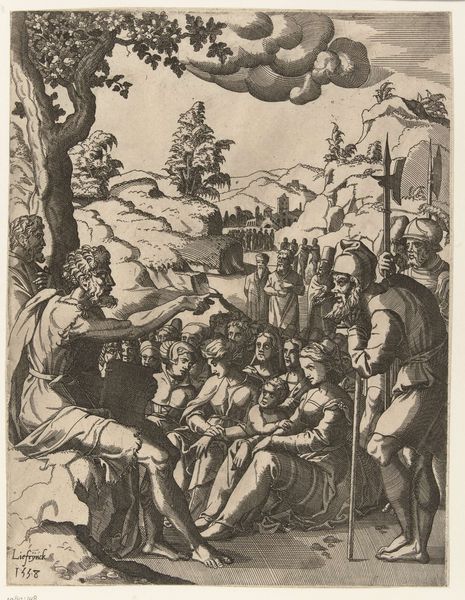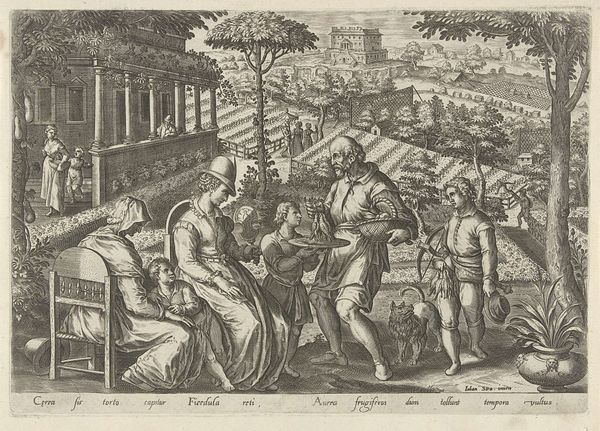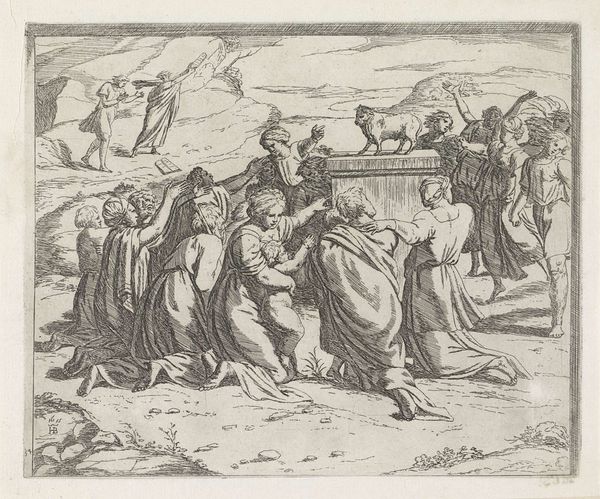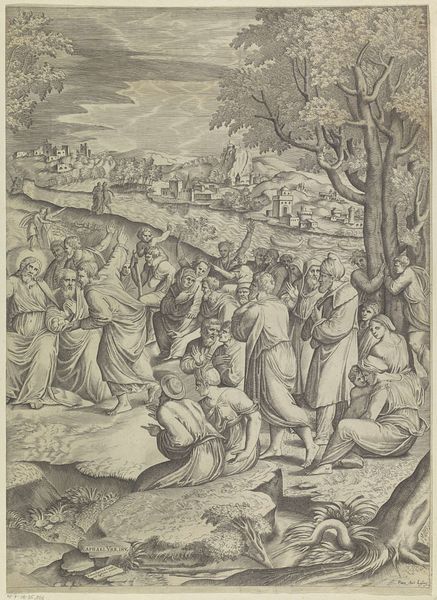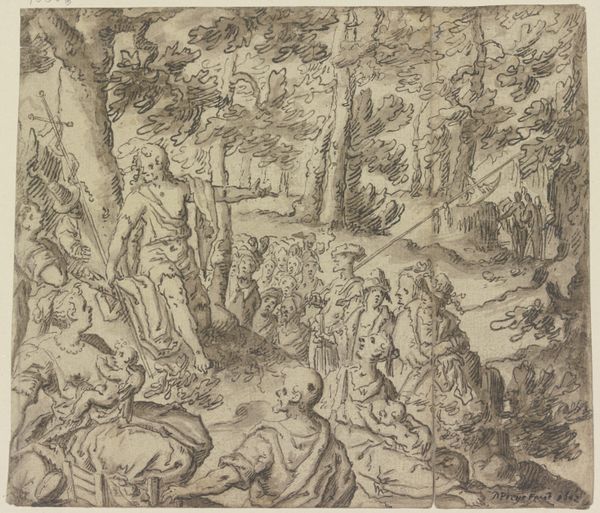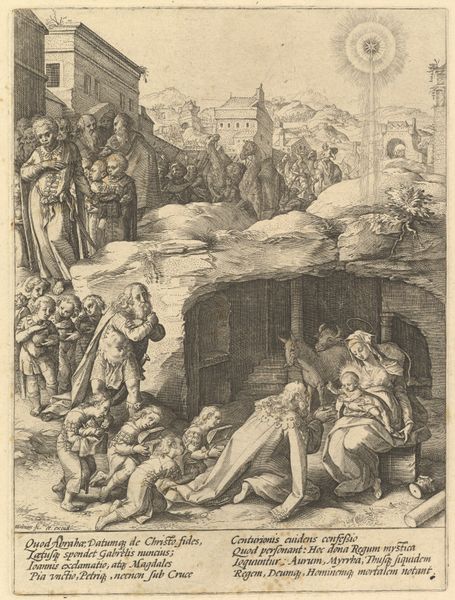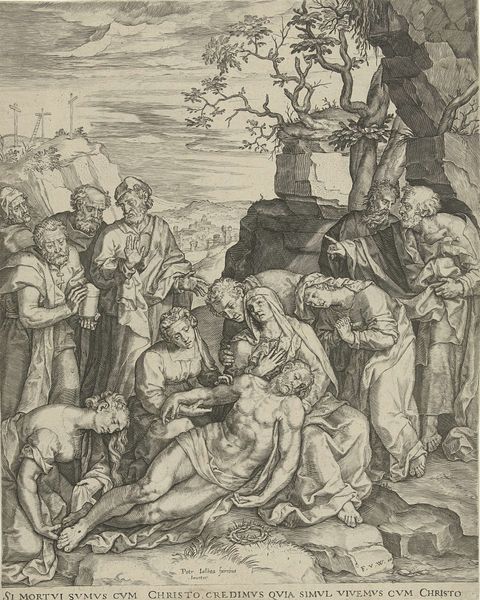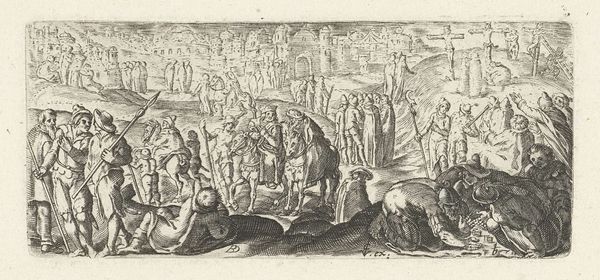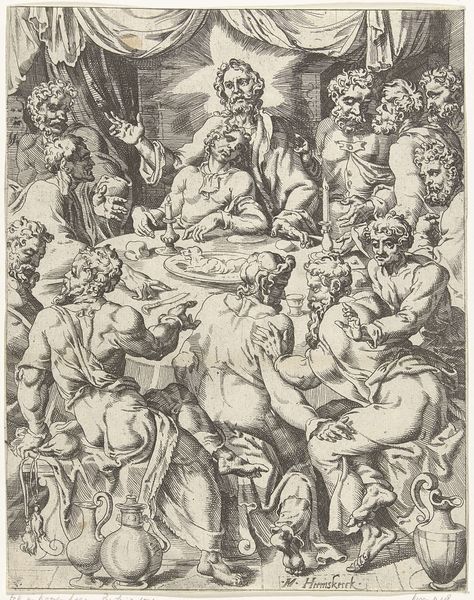
The story of Jason and Medea: at the left she carries off her son, in the middle she is shown in her madness, Jason stands at the right 1531 - 1576
0:00
0:00
drawing, print
#
drawing
# print
#
figuration
#
11_renaissance
#
history-painting
#
italian-renaissance
Dimensions: sheet: 8 1/2 x 12 1/2 in. (21.6 x 31.8 cm)
Copyright: Public Domain
Curator: What a whirlwind of figures and drama. There's so much visual storytelling going on. Editor: Indeed. This is an engraving by Giulio Bonasone, dating roughly between 1531 and 1576, entitled "The Story of Jason and Medea". It's currently held at the Metropolitan Museum of Art. Curator: It's visually arresting, a bit chaotic even. At first glance, it feels incredibly unsettling. The density of the figures and their exaggerated gestures convey high emotional tension. What societal circumstances framed the creation of such a visually dense and emotionally charged piece? Editor: Well, remember this comes out of the Italian Renaissance. Bonasone was working in a cultural environment steeped in classical literature and mythology, but also experiencing massive political upheaval. Prints like this were key to disseminating visual narratives, particularly moralizing tales like the story of Medea and Jason, across a wider audience. The tragic betrayal, Medea's agency—and horrific revenge—resonated in a society grappling with shifting power dynamics. Curator: That tension you mentioned between "agency and revenge" strikes me. I am really struck by the figure of Medea: initially in flight with her child, then positioned almost at the centre, seemingly at her breaking point, finally in the grip of a kind of paralysed desolation. The imagery lends itself to multiple interpretations about patriarchal structures, infanticide, exile and trauma that extend into contemporary feminist theory and sociological analyses of women's experiences. What purpose was it supposed to have served then? Editor: It served many purposes. Certainly didactic ones, a cautionary tale about passion and vengeance. Prints were also commodities, circulated amongst collectors, fueling interest in classical subjects. The availability of such artwork helped to consolidate cultural and moral precepts but also perpetuated political thought. Curator: It’s also visually stunning. The engraving technique itself, the detail he manages to achieve, contributes to this overall effect. Even though unsettling, it's hard to look away. It really holds your attention. Editor: I agree. And viewing the work with these contexts in mind— the mythological, the historical, and even contemporary concerns—adds layers of complexity and meaning that can really amplify its power. It certainly holds my attention, as well!
Comments
No comments
Be the first to comment and join the conversation on the ultimate creative platform.

